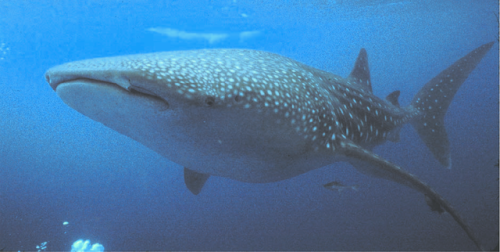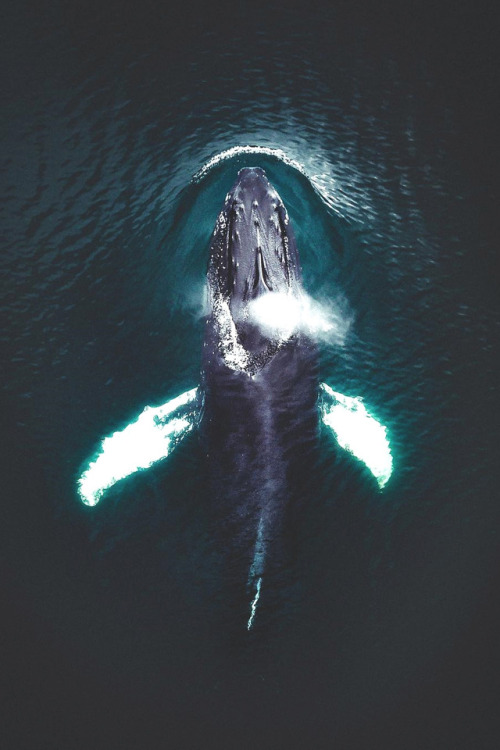For Two Years, The Bering Sea Has Been Largely Without Winter Ice, A Development Scientists Modeling

For two years, the Bering Sea has been largely without winter ice, a development scientists modeling the warming impacts of greenhouse-gas pollution from fossil fuels once forecast would not occur until 2050.
This ice provided a giant platform for growing algae at the base of the food chain, and has been a significant contributor to the remarkable productivity of a body of water, stretching from Alaska to northeast Russia, that sustains some of the biggest fisheries on the planet.
More Posts from Simplyphytoplankton and Others
Guess hoo-hoo it is 🦉
The owlfish, named for the size of its large eyes relative to its head, lives throughout the North Pacific. These species are in the family Bathylagidae and are relatively common in the deep sea, living at depths of over 6,000 meters (19,685 feet). In Monterey Bay, we observe these fish between a few hundred meters to over 2,000 meters (6,560 feet)

Baby loggerhead turtle at home in the sargassum in the Gulf Stream current, where it will spend roughly 5 years, finally being large enough that many animals won’t be able to eat! Sea Turtles have a very difficult life, most of which never make it to maturity and reproduce! Our own existence here on earth as a species is responsible for the death of many beautiful creatures including the sea Turtles, due to mistakes of the past! We have the knowledge, technology and some the drive to fix this, but will we make necessary changes to put our beautiful planet into a sustainable direction? I MOST DEFINITELY WILL! Please join me as our planets future and all creatures are dependent on it! Be the change the world needs! @jim_abernethy #beautiful #babyturtle #gorgeous #cute #precious #underwater #saveturtles #saveoceans (at Jim Abernethy’s Scuba Adventures & Marine Life Art Gallery)

FROM PANAMA TO MARIANA TRENCH: FEMALE WHALE SHARK MADE A RECORD!
For two and a half years, scientists followed the movements of Anne, a whale shark, during which she swam from the coast of Central America to the Mariana Trench.
In 2011, researchers put a transmitter on Anne near Coiba Island in Panama. In the following 841 days, Anne’s transmitter sent a signal to the ARGOS satellite when it swam close to the surface. These trasmitter allowed the team to follow its movements to the south to the Galapagos Islands and throughout the Pacific to the Mariana Trench, to the south of Japan and the east of the Philippines. She traveled a distance of 20142 kilometers.

-Whale shark route from Panama to the Mariana Islands (black track) tagged in September 2011, and old record from Mexico to the Marshall Islands (red track, tagged in September 1995).
The finding reinforces the position of the whale shark as one of the animals that travels most, along with leatherback turtle, gray whale and the arctic tern. In 2016, the IUCN cataloged the species for the first time as threatened. Biologists calculate that tropical and subtropical seas have less than half of whale sharks that they had 75 years ago, which increases the urgency of their protection.
Read also: This is why whale shark aggregate just in 20 sites!
Photo: A whale shark at Gladden Spit, Belize. Source Heyman et al.,2001.
Reference (Open Access): Guzman et al., 2018. Longest recorded trans-Pacific migration of a whale shark (Rhincodon typus). Marine Records





It’s National Hippo Day, and this is all we got.

My host dad’s mom’s 86th birthday cake.

- Shadows of the ocean.🐋 Photo: @itookthisphotograph #oceanfilmtour #oceanlovers #underwaterphoto #whale #oceanlife #marinelife #ocean
This past weekend marked the first anniversary of the launch of NASA’s latest ocean color satellite, PACE 🛰️! Happy birthday PACE!

Sharpening Our View of Climate Change with the Plankton, Aerosol, Cloud, ocean Ecosystem Satellite
As our planet warms, Earth’s ocean and atmosphere are changing.
Climate change has a lot of impact on the ocean, from sea level rise to marine heat waves to a loss of biodiversity. Meanwhile, greenhouse gases like carbon dioxide continue to warm our atmosphere.
NASA’s upcoming satellite, PACE, is soon to be on the case!
Set to launch on Feb. 6, 2024, the Plankton, Aerosol, Cloud, ocean Ecosystem (PACE) mission will help us better understand the complex systems driving the global changes that come with a warming climate.

Earth’s ocean is becoming greener due to climate change. PACE will see the ocean in more hues than ever before.
While a single phytoplankton typically can’t be seen with the naked eye, communities of trillions of phytoplankton, called blooms, can be seen from space. Blooms often take on a greenish tinge due to the pigments that phytoplankton (similar to plants on land) use to make energy through photosynthesis.
In a 2023 study, scientists found that portions of the ocean had turned greener because there were more chlorophyll-carrying phytoplankton. PACE has a hyperspectral sensor, the Ocean Color Instrument (OCI), that will be able to discern subtle shifts in hue. This will allow scientists to monitor changes in phytoplankton communities and ocean health overall due to climate change.

Phytoplankton play a key role in helping the ocean absorb carbon from the atmosphere. PACE will identify different phytoplankton species from space.
With PACE, scientists will be able to tell what phytoplankton communities are present – from space! Before, this could only be done by analyzing a sample of seawater.
Telling “who’s who” in a phytoplankton bloom is key because different phytoplankton play vastly different roles in aquatic ecosystems. They can fuel the food chain and draw down carbon dioxide from the atmosphere to photosynthesize. Some phytoplankton populations capture carbon as they die and sink to the deep ocean; others release the gas back into the atmosphere as they decay near the surface.
Studying these teeny tiny critters from space will help scientists learn how and where phytoplankton are affected by climate change, and how changes in these communities may affect other creatures and ocean ecosystems.

Climate models are one of our most powerful tools to understand how Earth is changing. PACE data will improve the data these models rely on.
The PACE mission will offer important insights on airborne particles of sea salt, smoke, human-made pollutants, and dust – collectively called aerosols – by observing how they interact with light.
With two instruments called polarimeters, SPEXone and HARP2, PACE will allow scientists to measure the size, composition, and abundance of these microscopic particles in our atmosphere. This information is crucial to figuring out how climate and air quality are changing.
PACE data will help scientists answer key climate questions, like how aerosols affect cloud formation or how ice clouds and liquid clouds differ.
It will also enable scientists to examine one of the trickiest components of climate change to model: how clouds and aerosols interact. Once PACE is operational, scientists can replace the estimates currently used to fill data gaps in climate models with measurements from the new satellite.

With a view of the whole planet every two days, PACE will track both microscopic organisms in the ocean and microscopic particles in the atmosphere. PACE’s unique view will help us learn more about the ways climate change is impacting our planet’s ocean and atmosphere.
Stay up to date on the NASA PACE blog, and make sure to follow us on Tumblr for your regular dose of sPACE!

Diatom seen through scanning electron microscope.






-
 wypad liked this · 5 years ago
wypad liked this · 5 years ago -
 senoritafish liked this · 5 years ago
senoritafish liked this · 5 years ago -
 polymathmadness reblogged this · 5 years ago
polymathmadness reblogged this · 5 years ago -
 simplyphytoplankton reblogged this · 5 years ago
simplyphytoplankton reblogged this · 5 years ago -
 discoveroceanography reblogged this · 5 years ago
discoveroceanography reblogged this · 5 years ago -
 pendragons-study reblogged this · 5 years ago
pendragons-study reblogged this · 5 years ago -
 pendragons-study liked this · 5 years ago
pendragons-study liked this · 5 years ago -
 solarstations reblogged this · 5 years ago
solarstations reblogged this · 5 years ago -
 jas114 reblogged this · 5 years ago
jas114 reblogged this · 5 years ago -
 jas114 liked this · 5 years ago
jas114 liked this · 5 years ago -
 currentclimate reblogged this · 5 years ago
currentclimate reblogged this · 5 years ago

Blog dedicted to phytoplankton. Phytoplankton are microscopic organisms that are responsible for half of the photosynthesis that occurs on Earth. Oh, and they look like art... Follow to learn more about these amazing litter critters! Caution: Will share other ocean science posts!Run by an oceanographer and phytoplankton expert. Currently a postdoctoral researcher.Profile image: False Colored SEM image of Emiliania huxleyi, a coccolithophore, and the subject of my doctoral work. Credit: Steve Gschmeissner/ Science Photo Library/ Getty ImagesHeader image: Satellite image of a phytoplankton bloom off the Alaskan Coast, in the Chukchi SeaCredit: NASA image by Norman Kuring/NASA's Ocean Color Web https://earthobservatory.nasa.gov/images/92412/churning-in-the-chukchi-sea
158 posts